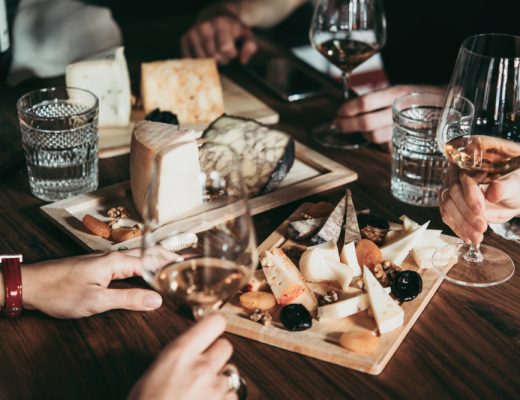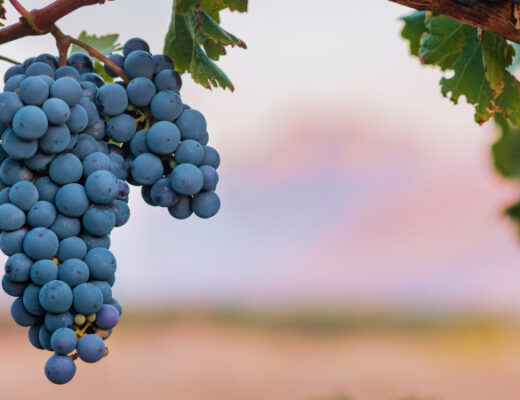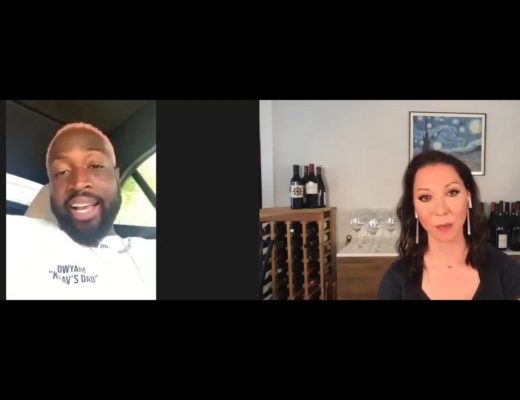Champagne is synonymous with sparkling wine—too synonymous if you ask the French, who have been arguing for decades against the sacred term being used for sparkling wine made anywhere other than the cool, limestone-rich region just north of Paris.
We can’t blame them, and we agree that vrai Champagne—which is crafted from Pinot Noir, Chardonnay, and Pinot Meunier—stands alone. It comes from one of the northernmost winemaking regions in the world and the coolest in France, and the combination of a chilly climate and the chalk and marl soils imbue the wines with racy acidity, profound structure, and tongue-coating texture that can’t be reproduced anywhere else.
But just because Champagne has a magic all its own doesn’t mean it’s got a bubbly monopoly. In fact, fantastic sparkling wine is produced all over the world in the méthode Champenoise, or what the Champenoise would prefer you call the méthode traditionnelle. Out of respect for our French friends and reverence for the singular sparkling wine they produce, we’ll stick to the latter.
Quick fermentation refresher: When any liquid ferments, its sugars are consumed by yeast. This process produces two by-products: alcohol and carbon dioxide (CO₂). So as grape juice ferments, sugar goes down, alcohol goes up, and carbon dioxide bubbles off into the atmosphere. Making sparkling wine is just a matter of capturing some CO₂ bubbles in the wine.
While some sparkling wine is made by capturing the CO₂ from the original fermentation, traditional method sparkling wines get their bubbles from a second fermentation—one that must take place inside the bottle. After the bottle is filled with still wine (wine with no bubbles), the winemaker sparks a second fermentation by adding a cocktail of yeast, wine, and sugar known as liqueur de tirage. Then she caps the bottle, so as the second fermentation takes place, the CO₂ can’t escape.
The Traditional Method: Inspired by Champagne, but with the Diversity of Global terroirs
If you see the words méthode traditionnelle, or similar on a bottle, you can bet that the wine was made in this way. In France, there’s a dedicated classification: Crémant is made in seven different regions, applying Champagne style to a blend of Champagne grapes and local varieties—the Loire leans on Chenin Blanc, Alsace favors Pinot Blanc, and Limoux, the site of France’s first intentionally sparkling wine, adds the local Mauzac to Chardonnay and Pinot Noir. For anyone seeking regional French character for about half the price of Champagne, crémant is an excellent choice—it’s crafted according to a set of guidelines that, while more relaxed than Champagne’s, are more than strict enough to guarantee excellent sparkling wine quality.
Try it:
NV Langlois-Chateau Crémant de Loire Brut Loire Valley
One of the most famous non-Champagne sparklers comes from northern Spain: Cava, most of which is made in Catalunya, applies the método tradicional to local grape varieties Macabeo, Xarel-lo, and Parellada (although the grapes of Champagne are permitted) to create a tangy, earthen, and smoky mineral sparkler. At the more affordable end, Cava offers great value—it can provide bone-dry, lip-smacking quality with no more than a Prosecco-like impact on your pocketbook—and the very best, longest-aged Cavas can rival Champagne’s quality and complexity.
Try it:
NV Marques de Caceres Brut Cava Sant Sadurni d’Anoia
When sampling sparklers from elsewhere in France, Europe, and the United States you might notice less of the toasty, baking-bread quality that’s so common in Champagne. That’s because that flavor comes from the close contact that the wine makes with the lees (spent yeast cells). Since Champagne must be aged on the lees in-bottle for 12 months, it shows more leesy quality than wines from regions whose ageing requirements are less extensive.
Try it:
2016 Schramsberg Vineyards Blanc de Blancs Brut North Coast California
The exception might be Italy’s Franciacorta. Made in cool Lombardia, it’s modeled directly modeled after Champagne, even using the same grapes (with Pinot Blanc sometimes comprising a small part of the blend). Since Franciacorta has longer aging requirements than Champagne, it has a similar toasty and nutty quality from the extended lees contact, and can often fit in with Champagne at a side-by-side tasting. You can often pick out Franciacorta by its savory quality, and notes of aromatic fresh herbs, that contrast with Champagne’s floral nature. These wines boast plenty of complexity, but since they all hail from warmer regions, they’ve got a riper fruit profile and less of the cool-climate, chalk-infused raciness of Champagne.
And while we contend that there’s nothing like Champagne, we will never, ever turn down a glass of a quality sparkler from elsewhere in the world.
The good news is that many of these wines offer stellar value for less than half the price of Champagne. The downside is that their price can still reflect an extremely labor-intensive process, as much work is necessary to clear the dead yeast cells, an inevitable by-product of the traditional method, from the bottle before it’s sold.
In order to do this, the lees are first moved to the neck of the bottle through a process called riddling, whereby the bottles are slowly rotated (over a matter of weeks) until they’re top-down, and the lees have collected near the cap. This process used to be done by hand (and still is for some Champagne houses’ top bottlings), but now is generally performed by a massive machine called a gyropalette, a Spanish invention capable of riddling hundreds of bottles at a time.
With the lees in the neck of the bottle, the bottle’s ready to be disgorged. The neck is quickly frozen in a freezing saline solution, then the bottle is popped open, discharging a murky, icy plug from the bottle. After being topped off, corked, and caged, the bottle is ready for sale.
Gyropalette or not, the traditional method is extremely time-consuming and labor-intensive. That’s why the favored, affordable anytime bubbly at brunches, bachelorette parties, and blowouts all across the USA is Prosecco—the fruity, fun Italian sparkler made by the Charmat (or tank) method. Like the traditional method, the Charmat method involves two fermentations. But rather than taking place in the bottle, the second fermentation takes place in a stainless steel tank.
The Charmat Method: Same Bubbles, Simpler Process
As you can imagine, it’s a lot easier to rack the sparkling wine off of the yeast cells and clean the broad bottom of the tank once than it is to disgorge it bottle by bottle. But the differences in Prosecco go beyond the work it takes to make it. Composed mainly of Glera (the grape formerly known as Prosecco), it’s made with riper fruit and spends less time in contact with the lees than Champagne, so the resulting wine is bursting with stone fruit and floral aromas more than Champagne-like complexity. But the very best Proseccos have a taut structure and mineral character similar to other notable aromatic white wines.
The Charmat method is not limited to Prosecco in Italy. It’s also used to make Brachetto—the sweet, low-alcohol, light-bodied Piedmontese bubbly that Caesar and Mark Antony supposedly used to woo Cleopatra—as well as north-central Italy’s Lambrusco. Deep red Lambrusco, which used to be known (and many still think of) as low-alcohol sweet wine, now boasts some stunning reds that show off the character of the Lambrusco grape and Lombardian terroir in bone-dry, savory style.
In Germany, the Charmat method is employed to make Sekt from a range of grape varieties, although the best are often made with Riesling. The majority of entry-level Sekt is consumed in Germany, and you’ll find better-quality examples in the US bearing the name Deutscher Sekt, and showing the high-acid, honeyed fruit, and floral intensity of Riesling, with a refreshingly crisp finish.
For a Southern Hemisphere Charmat-method bubbly that oozes irreverence, we love Australian-made sparkling Shiraz. Its deep purple-ruby color could only come from Aussie Shiraz, and every sip pleases the palate with a heavenly combination of sweetness and effervescence—it’s unmatched at the task of clearing the palate after a bite of rich, fatty BBQ.
Although the traditional and Charmat methods produce most of the world’s sparkling wines, they don’t account for all of them. In France’s Savoie region, locals sip Bugey-Cerdon, a bright-red Gamay bubbly made from the méthode ancestrale, which captures the bubbles from the wine’s only fermentation in the corked bottle. Variations on this ancient, single-fermentation sparkling methods are found around the world under different names: pétillant naturel, méthode Gaillaçoise, and since they’ve got no additional sugar added, they’re often lower in alcohol (and bottle pressure) than their two-fermentation brethren.
We know, we know… for some sparkling wine drinkers, it’s Champagne or nothing. And while we love Champagne, we respectfully disagree. Non-Champagne sparklers wines, no matter the method, are vital and vibrant expressions of terroir and technique that are welcome in our glass any time. And we hope this introduction piques your interest, and encourages you to make a little room in your cellar for some brand-new bubbly.





